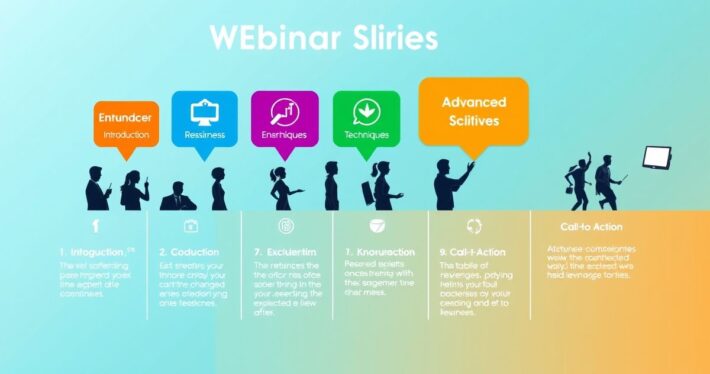How to Brainstorm Unique Webinar Topics

Brainstorming unique webinar topics can feel overwhelming—especially when you’re staring at a blank screen, hoping for inspiration to strike. But here’s the thing: crafting engaging, high-converting webinar topics doesn’t have to be a guessing game. With the right strategies and tools, you can uncover ideas that resonate deeply with your audience and position your brand as an authority. Whether you’re a seasoned pro or just starting, this guide will walk you through actionable steps to generate webinar topics that stand out in a crowded digital landscape.
Why Unique Webinar Topics Matter
Let’s be honest: the webinar space is more competitive than ever. Everyone’s hosting webinars, from startups to Fortune 500 companies. So, how do you break through the noise? It starts with your topic. A unique webinar topic not only grabs attention but also builds anticipation, encourages registrations, and drives conversions. Think about it—would you sign up for a webinar titled “Social Media Tips” or one called “5 Unconventional Social Media Hacks That 90% of Brands Are Missing”? The latter wins every time.
Step 1: Understand Your Audience
Before brainstorming, you need to know your audience inside and out. What are their pain points? What keeps them up at night? What solutions are they desperately searching for? Tools like surveys, social media polls, and customer interviews can provide valuable insights.
For example, I once worked with a SaaS company struggling to find webinar topics. After conducting a quick survey, we discovered their audience was primarily interested in time-saving automation hacks. Result? A sold-out webinar titled “Automate Your Workday in 30 Minutes or Less.”
Step 2: Leverage AI-Powered Tools
If you’re short on time or ideas, AI-powered webinar tools can be a game-changer. Platforms like our Slide Outline Creator not only help structure your content but also suggest topic angles based on industry trends and audience preferences. These tools take the guesswork out of brainstorming and ensure your topics are both relevant and engaging.
Step 3: Explore Industry Trends and Gaps
What’s trending in your industry? Are there emerging topics or technologies that haven’t been fully explored? Tools like Google Trends, industry reports, and competitor analysis can help you identify gaps in the market.
For instance, if you’re in the fitness industry and notice a surge in interest around “recovery techniques,” you could create a webinar titled “The Science of Recovery: How to Train Smarter, Not Harder.”
Step 4: Add a Twist to Common Topics
Sometimes, the best topics are familiar ones with a fresh twist. Take a common subject and add a unique angle or perspective. For example:
- Instead of “SEO Basics,” try “SEO Secrets Your Competitors Don’t Want You to Know.”
- Instead of “Email Marketing 101,” try “The Psychology of Email: How to Write Emails People Actually Open.”
Step 5: Focus on Outcomes, Not Just Topics
People don’t just want information—they want results. Frame your webinar topic around a specific outcome or transformation. For example:
- “How to Double Your Revenue in 90 Days”
- “The Ultimate Guide to Landing Your Dream Job in Tech”
This approach not only makes your topic more compelling but also positions your webinar as a must-attend event.
Step 6: Use Repurposed Content as Inspiration
Look at your existing content—blogs, podcasts, social media posts—and identify high-performing pieces. Can you turn a popular blog post into a webinar? Repurposing content is a smart way to leverage what’s already working.
Step 7: Collaborate with Industry Experts
Sometimes, a fresh perspective is all you need. Collaborate with industry experts or influencers to brainstorm topics that combine your expertise with theirs. This not only adds credibility but also broadens your reach.
Step 8: Test and Iterate
Not every topic will be a home run, and that’s okay. Use registrations, attendance rates, and post-webinar surveys to gauge success. Over time, you’ll develop a sense of what resonates with your audience.
Real-World Example: How a Marketing Agency Nailed It
One of my clients, a digital marketing agency, was struggling to attract attendees to their webinars. After analyzing their audience, we identified a gap in the market: small business owners were overwhelmed by the complexity of Google Ads. We created a webinar titled “Google Ads for Beginners: How to Get Started Without Losing Your Shirt.”
The result? A 70% increase in registrations and a 40% conversion rate on their offer. The key was addressing a specific pain point with a clear, outcome-focused topic.
FAQs About Brainstorming Webinar Topics
Q: How often should I host webinars?
A: It depends on your goals and audience. For lead generation, bi-weekly or monthly webinars work well. For evergreen content, consider quarterly.
Q: What if my audience is tired of the same topics?
A: Switch it up! Use tools like our High-Value Bonus Brainstormer to add fresh elements to your webinars, such as exclusive bonuses or Q&A sessions with experts.
Q: How do I know if my topic is unique enough?
A: Research competitors and industry trends. If you’re offering a new angle or actionable insights, you’re on the right track.
Final Thoughts
Brainstorming unique webinar topics doesn’t have to be a daunting task. By understanding your audience, leveraging AI-powered tools, and adding a creative twist, you can create topics that captivate and convert. Remember, the best webinar topics solve a specific problem, offer a clear outcome, and stand out in a sea of sameness. So, what’s your next webinar topic going to be?
Feature-image-description:
A vibrant brainstorming session with sticky notes, a laptop displaying webinar tools, and a creative team collaborating to generate unique webinar topics. Caption: “Unlock your creativity and brainstorm webinar topics that stand out and convert.”



